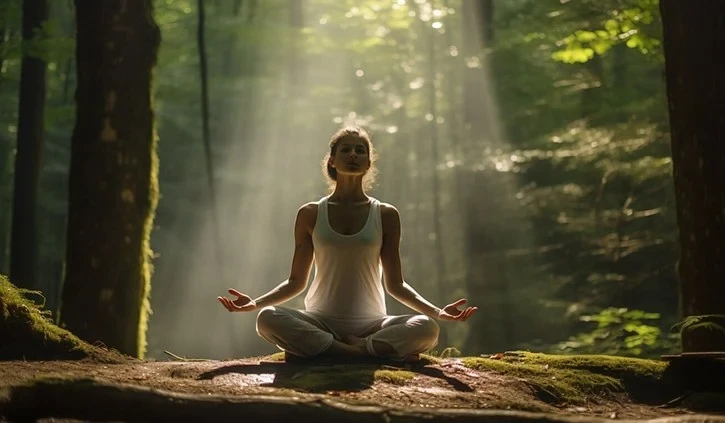You Go to a Far off Place,
Desires snatch you away,
Wanting to come back to who you are, you try hard but fail.
It is then when you need a brace,
For you want the tranquility to Stay,
All you then got to do is stop, exhale and inhale.
The world today gladly unrolls their yoga mats to embrace what was once a sacred practice endured by the Hindu saints or the Mahapurushs making Yoga a global phenomenon. What made the world believe in the power of Yoga for Life? What made the world adopt an ancient practice and favour it above every workout they probably knew? The answer to these questions lies under the covers of how did yoga come into the modern world.
The interaction of the East and the West to devise something new was not very unconventional.
There have been various success stories in the past that have laid the foundation of modern-day achievements. One of the most defining moments for Yoga, and also in common in the
modern world came when Swami Vivekananda travelled all the way to address at the Parliament of World Religions in 1893. The event that every Indian would recollect with pride. The two visits of Swami Vivekananda to the west in 1893 and 1899 that actually gave the audiences from the west a glimpse of “Raja Yoga” for the very first time.
The seeds had been sowed. All of a sudden the modern, technologically advanced world took great interest in this scientific practice that was old-fashioned, ancient. As later as in 1920, a young yoga enthusiast by the name Paramahamsa Yogananda, the founder of the Yogoda Satsang Society travelled to the United States, making the entire continent aware of what Yoga was only with his lectures presenting him as one of the notable Yoga Gurus. As much as Yoga was making speedy invasions into the Western World, India itself was not left slow. The Kaivalyadhama Health and Yoga Research Center was set up in Lonavala, Maharashtra, as early as in the year 1924, with the due efforts of Swami Kuvalayananda. If we see today, Kaivalyadham is one of the leading Yoga institutions in India, implementing several formal certificate courses in Yoga and elevating research in Yoga.
It took only around 30 years for the philosophy of yoga to spread wings across a greater distance. In 1950, various organisations and federations solely devoted to yoga were born in all countries of the world.
Richard Hittleman who studied in India set to return to New York in1950 to teach yoga. With millions of sold copies of his book and yoga teachings telecasted on TV in 1961, Richard Hittleman was the first one to propose a nonreligious form of Yoga solely with a stress on the physical benefits of Yoga,
Another name that contributes to the spread of Yoga is BKS Iyengar. He is universally regarded as one of the most fundamental figures in the spread of spiritual philosophy across the world.
He is the one who prefaced Yoga to western countries by bestowing his incredible physical suppleness in USA and UK. He was the one who popularized ‘Iyengar Yoga’ which included the
style and philosophies of yoga that he believed in. For his revolution in the field of Yoga science, TIME magazine named him one of the most influential people in the world in the year 2004.
Since the inception of Yoga into the modern world, it has been adopted by the people as if it were a part of their culture. Not only the western world but also India and Indian subcontinent
were mesmerized by their lost practice coming to a new age as well. Learning about one’s long lost scientific yet cultural practice, we learned about the understandings and misunderstandings, expectations and matters, altogether new interpretations of traditions and science. It also in a way changed our perception towards our own practice, summoning us to really think what happens while we practise yoga, what it means for us. Like the practice itself, this understanding can exhibit both our conditioning and our true identity.
History of Yoga is not merely for history’s sake. After having to learn the contemporary past of Yoga, we start looking through the powerful lens making the relationship with the tradition of the ancient and modern mix. Yoga in today’s time is more than just a working out technique. It has become a way of life, a lifestyle that has been adopted by each and everyone from all the
corners of life.
Yoga then and Yoga now might differ from each other. However, they have the same roots and extend the same cure for modern problems as well. Tracing yoga’s existence makes us believe
in the power of Yoga even more.


